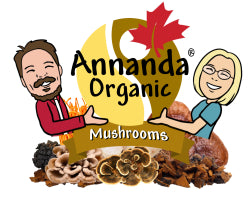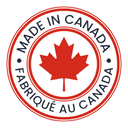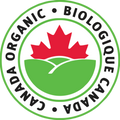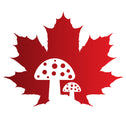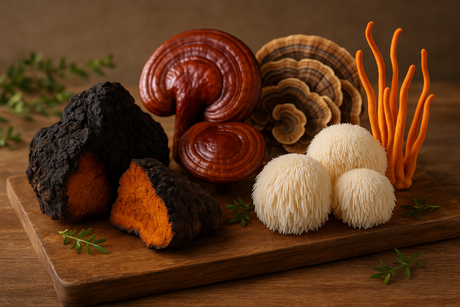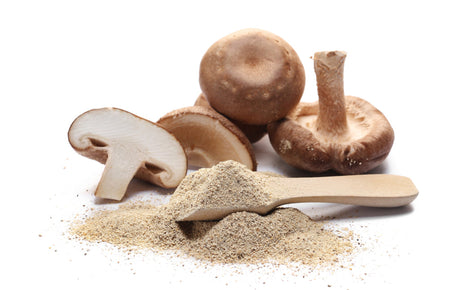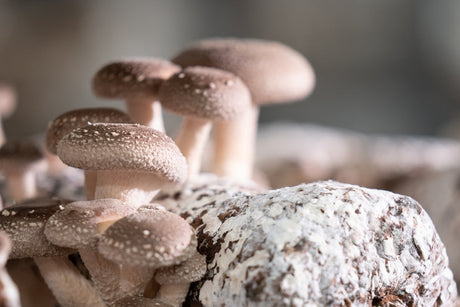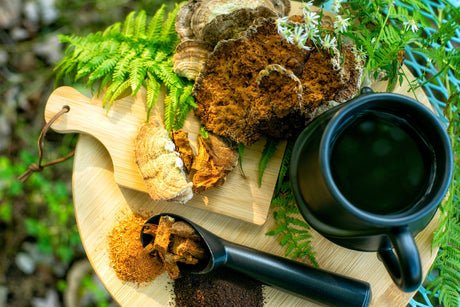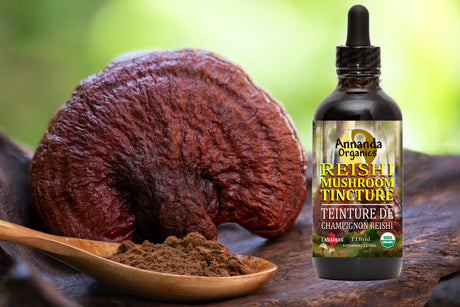Purported medicinal properties of chaga mushroom
Chaga has been found to contain a host of pharmacologically active compounds that beneficially affect human health (Zjawiony 2004, De Silva et al. 2013). The biological activity of I. obliquus is mainly due to the presence of several polysaccharides, constituting the following sugars: rhamnose, arabinose, xylose, mannose, glucose, and galactose (Hu et al. 2017). Additionally, in the last decade, several studies have reported biological activities of I. obliquus such as anticancer, antioxidation, anti-inflammatory, antidiabetic and enhancement of immunity (Choi et al. 2010). Remarkably, a number of studies demonstrates little or no side effects during use in disease treatment (Wasser 2002, Choi et al. 2010, Elkhateeb et al. 2019). The biological activities of I. obliquus are discussed below.
Antioxidant activity of chaga
Various compounds extracted from Chaga have been reported to exhibit an antioxidant activity. Nakajima et al. (2007) illustrated superiority of the antioxidant activity (both superoxide and hydroxyl radicals scavenging activities) of a hot water extract of Chaga in comparison with those of other medicinal fungi namely Agaricus blazei mycelia, Ganoderma lucidum and Phellinus linteus. Further determination of the antioxidant potential of the isolated fruiting body (spore-generating mass) and Sclerotium (Chaga) revealed that an 80 % methanolic extract of the fruiting body had a higher potential than that of Chaga decoction.
Antidiabetic - chaga
Chaga extracts (CE) function as an antidiabetic through the lowering of blood glucose levels. Polysaccharides, which represent one of the main components of CE are capable of inhibiting alpha-glucosidase, a carbohydrate-hydrolysing enzyme. Hence, CE may act as a hypoglycemic agent by retarding glucose absorption in digestive organs and thus preventing hyperglycemia following meals (Chen et al. 2010, Lu et al. 2010, Wang et al. 2017). Sun et al. (2008) and Xu et al. (2010), reported that polysaccharides of I. obliquus are capable of reducing glucose, triglycerides, fatty acids, and cholesterol levels in blood.
Anti-inflammatory chaga mushroom
Causes of inflammation can range from wounds, burns, infections, stress, free radicals, radiation and allergies, to immune system disorders. Drugs reducing inflammation are called anti-inflammatories. Van et al. (2009) tested several different types of extractions from Chaga, for their ability to reduce inflammation. All of those tested significantly inhibited inflammation, including a water-based polysaccharide extract and an ethanol-based extract. Kim et al. (2007) and Choi et al. (2010) found similar results with ethanol extracts.
Anticancer activity of chaga
The anticancer activity of CE is perhaps the most widely reported health benefit and that which has received the most interest. The cytotoxic and/or apoptotic effects of CE have been demonstrated in numerous in vitro studies in cancer cell lines, including the human colon cancer cells and the human hepatoma HepG2 cells (Youn et al. 2008). Polysaccharides isolated from I. obliquus sclerotium have a direct antitumor effect due to protein synthesis inhibition in tumour cells. Also, polysaccharides derived from the mycelium of I. obliquus function by activating the immune system. Due to the limited toxicity of these substances, both extracts as well as isolated and purified chemicals may be a good alternative to current chemotherapy and have potential for a role in cancer prevention (Staniszewska et al. 2017). Heteropolysaccharides and homoglucans isolated from the sterile conk as well as endopolysaccharides present in the mycelium differ in the mechanism of antitumor activity; polysaccharides from sterile conks act directly on the tumour cells and endo-polysaccharides act indirectly by activating the immune system in a way similar to bacterial lipopolysaccharide (Kim et al. 2006). The triterpenoid inotodiol showed the strongest anti-proliferative effect on breast cancer Walker 256 cell line (Nakata et al. 2009). Kang et al. (2015) reported that ergosterol peroxide acts as an antiproliferative agent and also inhibits the colony formation ability of tumour cells HCT116, HT-29, SW620 and DLD-1 cell lines of colon. The Ergosterol peroxide from I. obliquus exhibits anticancer activity by down-regulation of the β-catenin pathway in colorectal cancer and it shows that it down-regulated β-catenin signalling; this proves that I. obliquus can be developed as a promising medicine to treat colon cancer (Kang et al. 2015). Nakajima et al. (2009) show that phenolic compounds of methanolic I. obliquus extract demonstrate a target toxicity against several lines of cancer cells and the absence of cytotoxic effects against normal cells. Summary of identified medicinal compounds and their action Over 200 compounds have been extracted and identified from I. obliquus (Rogers 2011). These compounds belong to various chemical groups such as lipids, carbohydrates, polyphenols, and terpenes. The list of compounds extracted from I. obliquus includes but are not limited to β-sitosterol, fecosterol, episterol, β-glucans, xylogalactoglucose, phelligridins D, 3,4-dihydroxybenzalacetone, inonoblins A, vanillic acid, syringic acid, ferulic acid, trametenolic acid, p-hydroxybenzoic acid, foscoperianol D. Some of the biologically active compounds extracted from I. obliquus actually originate from the host tree itself and these include betulin, betulinic acid and such compounds are absent in cultivated strains grown in the laboratory. Some of the biologically active compounds extracted from I. obliquus are listed in the table below:
| Compound | Chemical group | Biological activity |
| Betulin | Terpenes | Antibacterial, protective effects against cadmium induced cytotoxicity |
| Betulinic acid | Terpenes | Antibacterial, anti-malarial, anti-inflammatory, anti-HIV activities and cytotoxicity against a variety of tumor cell lines |
| Inotodiol | Triterpenes | Anticancer, inhibits cell proliferation |
| Lupeol | Triterpenes | Anti-inflammatory and anti-cancer |
| Caffeic acid | Polyphenol | Anti-cancer, inhibits cell proliferation |
| Trametenolic acid | Sterol | Anti-inflammatory |
| Melanin | Melanins | Antioxidant, protect DNA from damage |
| 3,4-dihydroxybenzalacetone | Polyphenol | Anticancer, regulates expression of genes promoting, anti-apoptosis, and cell proliferation. |
| Glucans | Carbohydrates | Immune modulator |
| Ergosterol peroxide | Sterol | Anticancer, antimicrobial, immunosuppressive |
| Inonoblin A | Polyphenol | Antioxidant |
| Phelligridin D | Polyphenol | Antioxidant, anti-inflammatory |
Courtesy of Thoma & al., 2020 Sydowia: Chaga (Inonotus obliquus): a medical marvel but a conservation dilemma?
Choi S.Y., Hur S.J., An C.S., Jeon Y.H., Jeoung Y.J., Bak J.P., Lim B.O. (2010) Anti-inflammatory effects of Inonotus obliquus in colitis induced by dextran sodium sulfate. Journal of Biomedicine & Biotechnology 2010: 943516. Crevelin E.J., Turatti I.C., Crotti A.E., Veneziani R.C., Lopes J.L., Lopes N.P., Cunha W.R. (2006) Identification of biologically active triterpenes and sterols present in hexane extracts from Miconia species using high-resolution gas chromatography. Biomedical Chromatography 20(8): 827– 830. Cui Y., Kim D.S., Park K.C. (2005) Antioxidant effect of Inonotus obliquus. Journal of Ethnopharmacology 96(1–2): 79–85. De Silva D., Rapior S., Sudarman E., Stadler M., Jianchu Xu, Aisyah A., Kevin D. (2013) Bioactive metabolites from macrofungi: ethnopharmacology, biological activities and chemistry. Fungal Diversity 62(1): 1–40. Elkhateeb W.A., Daba G.M., Thomas P.W., Wen T.C. (2019) Medicinal mushrooms as a new source of natural therapeutic bioactive compounds. Egyptian Pharmaceutical Journal 18(2): 88–101. Géry A., Dubreule C., André V., Rioult J.P., Bouchart V., Heutte N., Philippe Eldin de Pécoulas, Tetyana K., Garon D. (2018) Chaga (Inonotus obliquus), a future potential medicinal fungus in oncology? A chemical study and a comparison of the cytotoxicity against human lung adenocarcinoma cells (A549) and human bronchial epithelial cells (BEAS-2B). Integrative Cancer Therapies 17(3): 832–843. Hu Y., Teng C., Yu S., Wang X., Liang J., Bai X., Dong L., Song T., Yu M., Qu J. (2017) Inonotus obliquus polysaccharide regulates gut microbiota of chronic pancreatitis in mice. Applied Microbiology and Technology Express 7: 39. Kang J.H., Jang J.E., Mishra S.K., Lee H.J. (2015) Ergosterol peroxide from Chaga mushroom (Inonotus obliquus) exhibits anti-cancer activity by down-regulation of the β-catenin pathway in colorectal cancer. Journal of Ethnopharmacology 173: 303–312. Kim H.G., Yoon D.H., Kim C.H., Shrestha B., Chang W.C., Lim S.Y., Lee W.H., Han S.G., Lee J.O., Lim M.H., Kim G.Y., Choi S., Song W.O., Sung J.M., Hwang K.C., Kim T.W. (2007) Ethanol extract of Inonotus obliquus inhibits lipopolysaccharide-induced inflammation in RAW 264.7 macrophage cells. Journal of Medicinal Food 10: 80–89. Kim Y.O., Park H.W., Kim J.H., Lee J.Y., Moon S.H., Shin C.S. (2006) Anti-cancer effect and structural characterization of endo-polysaccharide from cultivated mycelia of Inonotus obliquus. Life Science 79(1): 72–80. Kukulyanskaya T.A., Kurchenko N.V., Kurchenko V.P., Babitskaya V.G. (2002) Physicochemical properties of melanins produced by the sterile form of Inonotus obliquus (“Chagi”) in natural and cultivated fungus. Applied Biochemistry and Microbiology 38(1): 58–61. Kuriyama I., Nakajima Y., Nishida H., Konishi T., Takeuchi T., Sugawara F., Yoshida H., Mizushina Y. (2013) Inhibitory effects of low molecular weight polyphenolics from Inonotus obliquus on human DNA topoisomerase activity and cancer cell proliferation. Molecular Medicine Reports 8(2): 535–542. Kuz’michev E.P., Sokolova E.S., Kulikova E.G. (2001) Common fungal diseases of Russian forests. General Technical Report NE 279. Newtown Square, PA, US Department of Agriculture, Forest Service, Northeast Research Stationn Kvasnica M., Sarek J., Klinotova E., Dzubak P., Hajduch M. (2005) Synthesis of phthalates of betulinic acid and betulin with cytotoxic activity. Bioorganic & Medicinal Chemistry 13(10): 3447–3454.
Lee I.K., Kim Y.S., Jang Y.W., Jung J.Y., Yun B.S. (2007) New antioxidant polyphenols from the medicinal mushroom Inonotus obliquus. Bioorganic & Medicinal Chemistry Letters 17(24): 6678–6681. Lee M.W., Hur H., Chang K.C., Lee T.S., Ka K.H., Jankovsky L. (2008) Introduction to distribution and ecology of sterile conks of Inonotus obliquus. Mycobiology 36(4): 199–202. Lindequist U., Niedermeyer T.H., Jülich W.D. (2005) The pharmacological potential of mushrooms. Evidence-Based Complementary and Alternative Medicine 2(3): 285–299. Lu X., Chen H., Dong P., Zhang X. (2010) Phytochemical characteristics and hypoglycaemic activity of fraction from mushroom Inonotus obliquus. Journal of the Science of Food and Agriculture 90: 276–80. Ma L., Chen H., Dong P., Lu X. (2013) Anti-inflammatory and anticancer activities of extracts and compounds from the mushroom Inonotus obliquus. Food Chemistry 139: 503– 508. Merdivan S., Lindequist U. (2017) Ergosterol peroxide: a mushroom-derived compound with promising biological activities− a review. International Journal of Medicinal Mushrooms 19: 93–105. Moghaddam M.G., Ahmad F.B.H., Samzadeh-Kermani A. (2012) Biological activity of betulinic acid: a review. Pharmacology & Pharmacy 3(2): 119–123. Nakajima Y., Nishida H., Matsugo S., Konishi T. (2009) Cancer cell cytotoxicity of extracts and small phenolic compounds from Chaga [Inonotus obliquus (Persoon) Pilat]. Journal of Medical Food 12(3): 501–507. Nakajima Y., Sato Y., Konishi T. (2007) Antioxidant small phenolic ingredients in Inonotus obliquus (Persoon) Pilat (Chaga). Chemical and Pharmaceutical Bulletin 55(8): 1222–1226. Nakata T., Taji S., Yamada T., Tanaka R. (2009) New lanostane triterpenoids, inonotustriols D, and E from Inonotus obliquus. Bull Osaka University of Pharmacological Science 3: 53–64. Nomura M., Takahashi T., Uesugi A., Tanaka R., Kobayashi S. (2008) Inotodiol, a lanostane triterpenoid, from Inonotus obliquus inhibits cell proliferation through caspase-3-dependent apoptosis. Anticancer Research 28(5A): 2691– 2696. Oh S.H., Choi J.E., Lim S.C. (2006) Protection of betulin against cadmium-induced apoptosis in hepatoma cells. Toxicology 220: 1–12. Pilz D. (2004) Chaga and other fungal resources: assessment of sustainable commercial harvesting in Khabarovsk and Primorsky Krais, Russia. Report prepared for Winrock International, Morrilton, Arkansas and the FOREST Project, Khabarovsk, Russia. Rogers R. (2011) The fungal pharmacy. North Atlantic Books, Berkeley, CA. Saar M. (1991) Fungi in Khanty folk medicine. Journal of Ethnopharmacology 31(2): 175–179. Saleem M. (2009) Lupeol, a novel anti-inflammatory and anti-cancer dietary triterpene. Cancer Letters 285(2): 109– 115. Silvan N., Sarjala T. (2017) Cultivation and antioxidative properties of pakuri (Inonotus obliquus) on low productive peatland forests. Abstract: Non-timber forest products and bioeconomy. 28–30th November 2017, Rovaniemi, Finland. P24. Spinosa R. (2006). The chaga story. The Mycophile 47: 1, 8, 23. Stamets P. (2011) Growing gourmet and medicinal mushrooms. Ten Speed Press. 130 Sydowia 72 (2020) Thomas et al.: Chaga – a conservation dilemma? Staniszewska J., Szyman´ski M., Ignatowicz E. (2017) Antitumor and immunomodulatory activity of Inonotus obliquus. Herba Polonica 63(2): 48–58. Stone N. (2015) The Himalayan Gold Rush The untold consequences of Yartsa gunbu in the Tarap valley. Independent Study Project (ISP) Collection. 2088. Sun J.E., Ao Z.H., Lu Z.M., Xu H.Y., Zhang X.M., Dou W.F., Xu Z.H. (2008) Antihyperglycemic and antilipidperoxidative effects of dry matter of culture broth of Inonotus obliquus in submerged culture on normal and alloxan-diabetes mice. Journal of Ethnopharmacology 118(1): 7–13. Sung B., Pandey M.K., Nakajima Y., Nishida H., Konishi T., Chaturvedi M.M., Aggarwal B.B. (2008) Identification of a novel blocker of IκBα kinase activation that enhances apoptosis and inhibits proliferation and invasion by suppressing nuclear factor-κB. Molecular Cancer Therapeutics 7(1): 191–201. Van Q., Nayaka B.N., Reimera M., Jonesa P.J., Fulcherb R.G., Rempel C.B. (2009) Antiinflammatory effect of Inonotus obliquus, Polygala senega L., and Viburnum trilobum in a cell screening assay. Journal of Ethnopharmacology 125: 487–493. Wang C., Chen Z., Pan Y., Gao X., Chen H. (2017) Anti-diabetic effects of Inonotus obliquus polysaccharides-chromium (III) complex in type 2 diabetic mice and its sub-acute toxicity evaluation in normal mice. Food and Chemical Toxicology 108: 498–509. Wasser S.P. (2002) Medicinal mushrooms as a source of antitumor and immunomodulating polysaccharides. Applied Microbiology and Biotechnology 60: 258–274. Xu X., Pang C., Yang C., Zheng Y., Xu H., Lu Z., Xu Z.H. (2010) Antihyperglycemic and antilipidperoxidative effects of polysaccharides extracted from medicinal mushroom Chaga, Inonotus obliquus (Pers.: Fr.) Pilat (Aphyllophoromycetideae) on alloxan-diabetes mice. International Journal of Medical Mushrooms 12(3): 235–44. Yogeeswari P., Sriram D. (2005) Betulinic acid and its derivatives: a review on their biological properties. Current Medicinal Chemistry 12(6): 657–666. Youn M.J., Kim J.K., Park S.Y., Kim Y., Kim S.J., Lee J.S., Chai K.Y., Kim H.J., Cui M.X., So H.S., Kim K.Y., Park R. (2008) Chaga mushroom (Inonotus obliquus) induces G0/G1 arrest and apoptosis in human hepatoma HepG2 cells. World Journal of Gastroenterology 14: 511–517. Zhong X.H., Wang L.B., Sun D.Z. (2011) Effects of inotodiol extracts from Inonotus obliquus on proliferation cycle and apoptotic gene of human lung adenocarcinoma cell line A549. Chinese Journal of Integrative Medicine 17(3): 218–223. Zjawiony J.K. (2004) Biologically active compounds from Aphyllophorales (polypore) fungi. Journal of Natural Products 67: 300–310.
